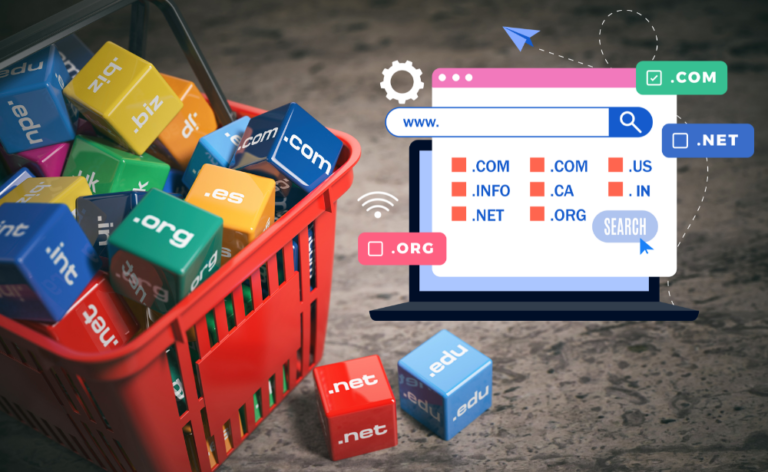Starting an online coaching business can be a rewarding and lucrative endeavour. With the rise of digital platforms, coaches can now reach a global audience, offering their expertise to clients from the comfort of their homes.
This guide will walk you through the steps to start your online coaching business, covering everything from planning and setup to marketing and growth strategies.
1. Introduction to Online Coaching
What is Online Coaching?
Online coaching involves providing guidance, support, and training to individuals or groups through digital platforms. It can encompass various fields such as business, health, personal development, etc. Unlike traditional coaching, online coaching allows for greater flexibility and accessibility.
Benefits of Online Coaching
- Global Reach: Connect with clients from anywhere in the world.
- Flexibility: Offer sessions at times that suit both you and your clients.
- Scalability: Grow your business without geographical limitations.
- Cost-Effective: Lower overhead costs compared to in-person coaching.
Market Overview
The online coaching industry has seen significant growth, with an increasing number of people seeking personal and professional development online. The global e-learning market is expected to expand, providing opportunities for new online coaches.
2. Planning Your Online Coaching Business
Identifying Your Niche
Choosing a niche is crucial for standing out in the competitive online coaching market. Consider your expertise, interests, and market demand when selecting your niche. Whether it’s business coaching, health and wellness, life coaching, or any other area, specializing will help you attract the right audience.
Market Research
Conduct thorough market research to understand your target audience, competitors, and market trends. Use surveys, interviews, and online research tools to gather valuable insights. This research will help you tailor your services to meet your potential client’s needs and identify market gaps.
Market Research Tools
| Tool | Description | Example Use Case |
|---|---|---|
| Surveys | Collect direct feedback from potential clients. | Google Forms, SurveyMonkey |
| Interviews | Conduct in-depth discussions to gain detailed insights. | One-on-one interviews, focus groups |
| Online Research | Analyze existing data and trends in the industry. | Google Trends, industry reports |
| Competitor Analysis | Examine the strengths and weaknesses of your competitors. | SWOT analysis of competitors’ services and marketing strategies |
Setting Goals and Objectives
Define clear goals and objectives for your coaching business. These should be specific, measurable, achievable, relevant, and time-bound (SMART). Goals can include the number of clients you aim to acquire, revenue targets, or milestones for expanding your services.
3. Developing Your Coaching Program
Curriculum Design
Design a structured curriculum that addresses the needs and goals of your clients. Include a mix of theoretical knowledge, practical exercises, and interactive sessions. Ensure that your curriculum is comprehensive and provides clear learning outcomes.
Creating Coaching Materials
Develop high-quality coaching materials such as workbooks, videos, and presentations. Ensure that these materials are engaging and easy to understand. Use a variety of formats to cater to different learning styles and keep your clients engaged.
Pricing Your Services
Set competitive pricing for your coaching services. Consider factors such as market rates, expertise, and the value you provide your clients. Offer different packages to cater to various budgets and needs, from one-on-one coaching sessions to group programs.
4. Setting Up Your Online Presence
Building a Website
Create a professional website that showcases your services, credentials, and client testimonials. Ensure that your website is user-friendly and mobile-responsive. Include a blog to share valuable content and improve your website’s SEO.

Choosing the Right Platform
Select a reliable platform for delivering your coaching sessions. Popular options include Zoom, Skype, and specialized coaching platforms like CoachAccountable. Ensure that your chosen platform offers the necessary features for your coaching style, such as video conferencing, screen sharing, and session recording.
Setting Up Payment Systems
Integrate secure payment systems on your website to facilitate easy transactions. Options include PayPal, Stripe, and other online payment gateways. Offer multiple payment options to cater to the preferences of your clients.
5. Marketing Your Coaching Business
SEO Strategies
Optimize your website for search engines to attract organic traffic. Use relevant keywords, meta descriptions, and high-quality content to improve your search engine rankings. Regularly update your blog with valuable content to keep your audience engaged and boost your SEO.
Social Media Marketing
Leverage social media platforms to promote your coaching business. Create engaging content, run targeted ads, and interact with your audience to build a solid online presence. Use platforms like Instagram, Facebook, LinkedIn, and YouTube to reach different segments of your target audience.
Content Marketing
Develop a content marketing strategy that includes blogging, video content, and email newsletters. Provide valuable content that addresses your target audience’s pain points and interests. Use this content to establish yourself as an authority in your niche and attract potential clients.
6. Managing Clients and Delivering Services
Client Onboarding
Develop a smooth onboarding process for new clients. Please provide them with all the necessary information and tools to get started with your coaching program. Use welcome emails, orientation sessions, and onboarding documents to ensure a seamless start for your clients.
Scheduling and Time Management
Use scheduling tools to manage your coaching sessions effectively. Ensure that you allocate enough time for preparation, delivery, and follow-up. Tools like Calendly, Acuity Scheduling, and Google Calendar can help you stay organized and avoid overbooking.
Communication Tools
Utilize communication tools such as email, messaging apps, and video conferencing software to stay connected with your clients. Regular communication helps build solid relationships and ensures clients feel supported throughout their coaching journey.

7. Legal and Financial Considerations
Business Registration
Register your coaching business with the appropriate authorities. Choose a suitable business structure, such as a sole proprietorship, partnership, or LLC, and comply with all legal requirements. Proper registration will protect your business and help establish credibility with your clients.
Taxes and Accounting
Keep accurate financial records and file your taxes on time. Consider hiring an accountant to manage your finances and ensure compliance. Use accounting software to track your income and expenses, making it easier to manage your business finances.
Legal Contracts
Use legal contracts to protect your business and set clear client expectations. Include terms and conditions, privacy policies, and disclaimers. Contracts should outline the scope of services, payment terms, and other essential details to avoid misunderstandings.
8. Scaling Your Business
Hiring Additional Coaches
As your business grows, consider hiring additional coaches to meet the demand. Ensure that they align with your values and have the necessary expertise. This will allow you to offer a broader range of services and accommodate more clients.
Expanding Your Services
Diversify your offerings by introducing new coaching programs, workshops, or online courses. This can help attract a wider audience and increase your revenue. Continuously seek feedback from your clients to improve and expand your services.
Leveraging Technology
Use technology to automate and streamline your business processes. Invest in CRM software, email marketing tools, and other solutions to enhance efficiency. Automating repetitive tasks will free up more time for you to focus on coaching and growing your business.
9. Challenges and Solutions
Common Challenges
- Client Retention: Maintaining long-term client relationships.
- Competition: Standing out in a crowded market.
- Time Management: Balancing coaching sessions with administrative tasks.
Tips for Overcoming Obstacles
- Client Retention: Offer personalized services and regular follow-ups to keep clients engaged.
- Competition: Focus on your unique value proposition and continuously improve your skills to differentiate yourself from competitors.
- Time Management: Delegate tasks and use productivity tools to manage your time effectively. Prioritize high-impact activities that contribute to your business growth.
10. Conclusion
Starting an online coaching business requires careful planning, effective marketing, and continuous improvement. Following the steps outlined in this guide, you can build a successful coaching business that reaches a global audience.
Take the first step towards your online coaching business by identifying your niche and conducting market research. Stay committed to your goals and continuously seek opportunities for growth and improvement.
Remember, the journey to success is ongoing, and with dedication and the right strategies, you can achieve your business goals.







